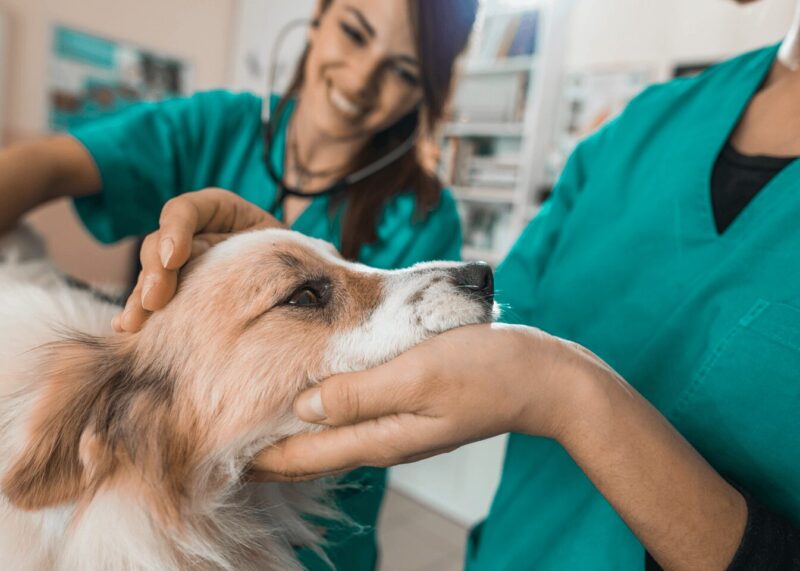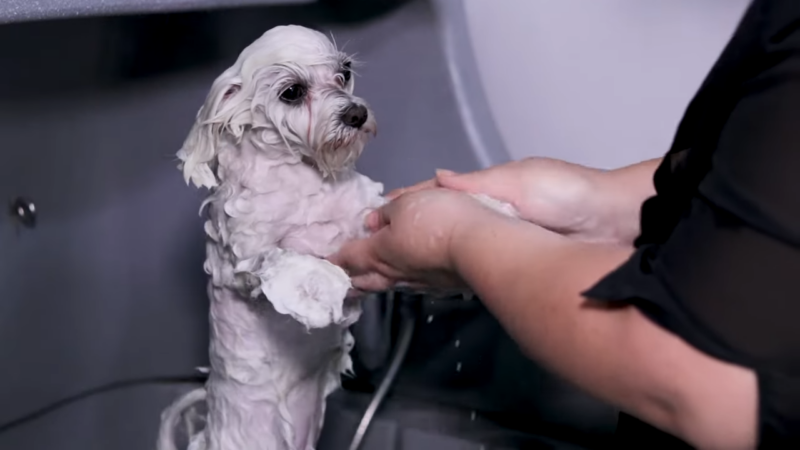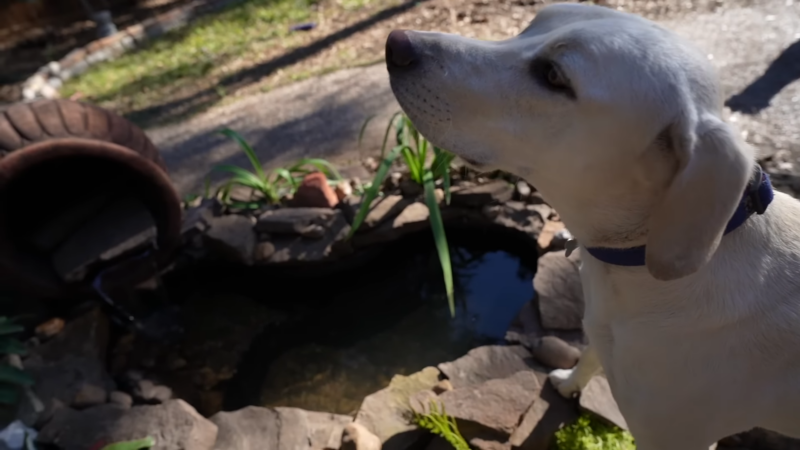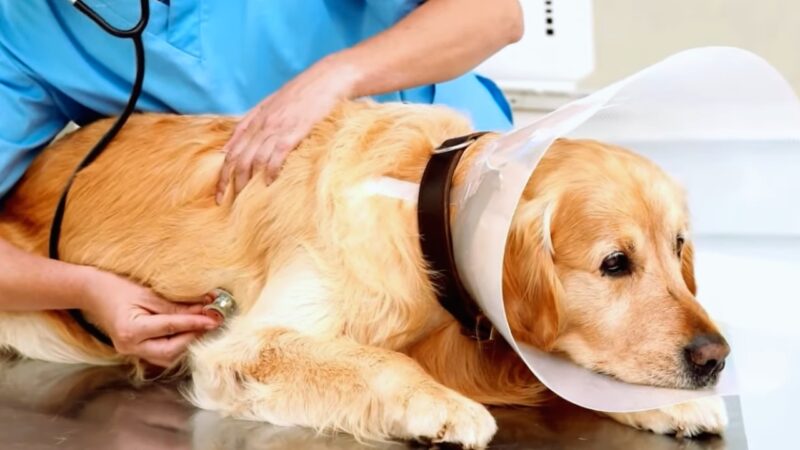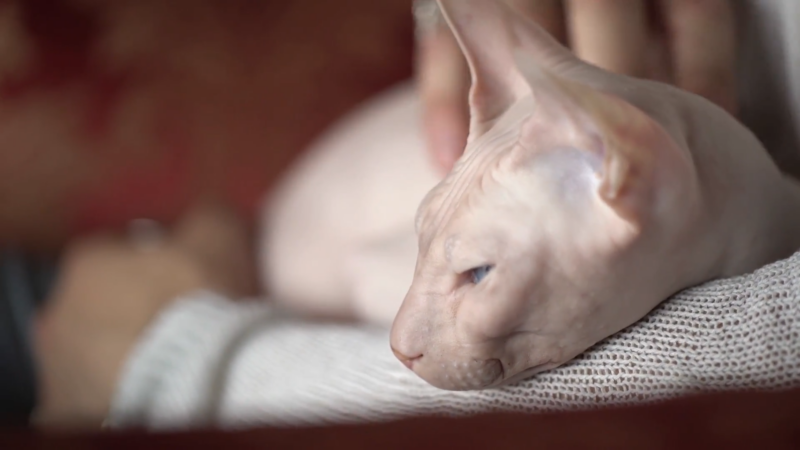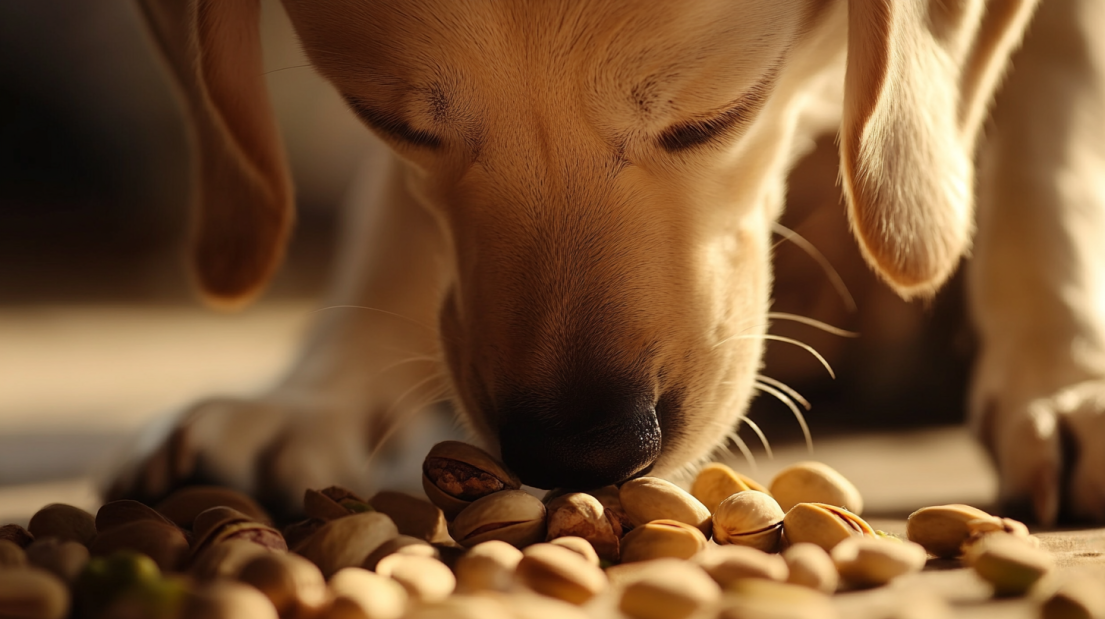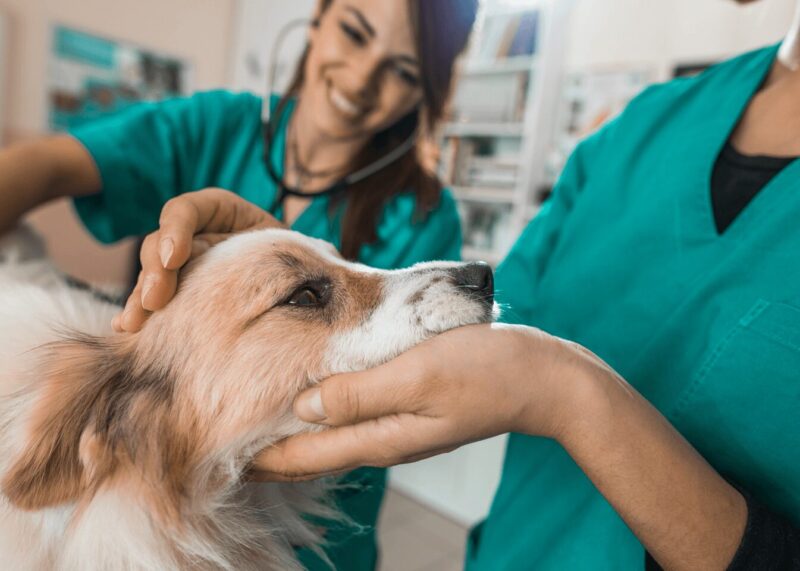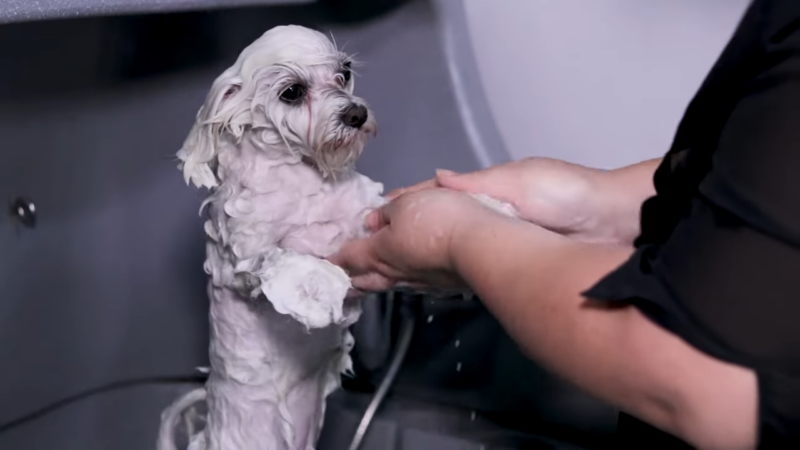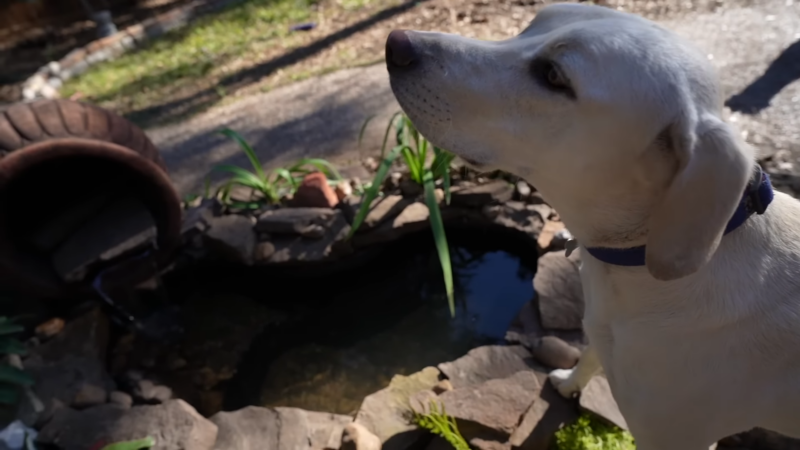
-
Nancy Nixon
- Published:
- Updated: March 12, 2024
- Category: Dog Specific Care, Medication and Treatments, Pet Diet and Nutrition
Share Post:
As a vet with a fur buddy who’s been through the wringer with pancreatitis, let me tell you, choosing the right food feels like navigating a tricky dietary labyrinth. Picture this: every time my dog’s pancreas encounters a no-no snack, it throws a major tantrum, much like a picky eater, except the stakes are way higher. This pesky condition drains their zest, plays havoc with their digestion, and really puts a damper on our playtime.
It’s often triggered by a little too much love for fatty treats, an extra treat or two leading to some weight gain, or underlying health issues lurking in the shadows.
So, for me, picking the perfect treat isn’t just about fun and games; it’s a mission to keep my buddy’s tail wagging and belly content. Are you ready to dive into ten snack ideas that have gotten a paws-up from my own pooch and are sure to keep your dog’s pancreas in the happy zone? Let’s get to it!
Does My Dog Have Pancreatitis?
| Sign/Symptom | Description |
|---|---|
| Painful Abdomen | Tenderness or reaction to touch in the abdominal area. |
| Loss of Appetite | Reluctance or refusal to eat. |
| Vomiting | Frequent and potentially severe vomiting. |
| Diarrhea | Loose or more frequent bowel movements that may be smelly. |
| Lethargy | Unusual lack of energy, reluctance to move or play. |
| Fever | Elevated body temperature. |
| Dehydration | Signs of decreased water intake or dry, sticky gums. |
| Weight Loss | Noticeable decrease in body weight over time. |
If you suspect your dog might have pancreatitis, watch for these signs: abdominal pain, sudden loss of appetite, severe vomiting, smelly diarrhea, unusual lethargy, fever, signs of dehydration like dry gums, and unexpected weight loss.
These symptoms can vary in intensity and may not all be present at once. If you notice any of these troubling changes in your furry friend, it’s crucial to consult a veterinarian promptly for a proper diagnosis and timely treatment. Early detection can greatly improve the management of pancreatitis and your dog’s overall well-being.
10. Lean Meat Delights
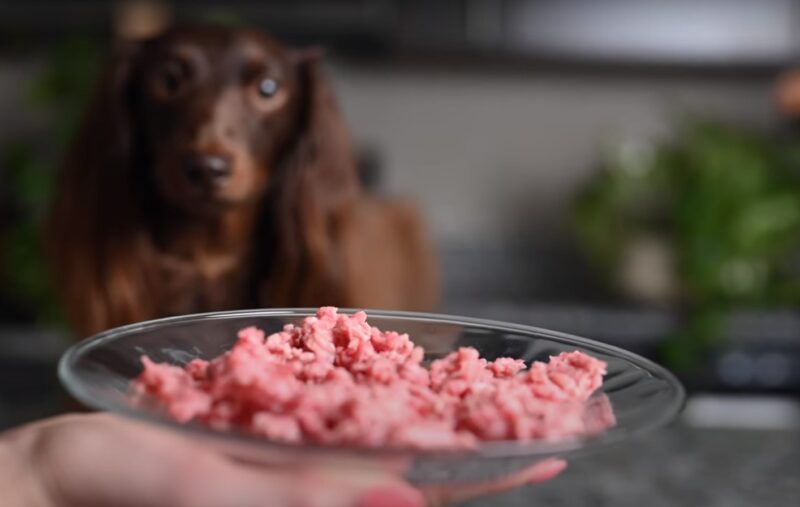
Lean meats like chicken, turkey, and lean cuts of beef or pork are excellent low-fat options for dogs with pancreatitis. Cooking these meats by boiling or steaming without any added oils or fats can make them a safe treat. Make sure the meat is well-cooked and avoid any spicy or rich seasonings that could upset your dog’s stomach.
Boiled Chicken Bites Recipe
- Take boneless, skinless chicken breasts and cut them into bite-sized pieces.
- Place the pieces in a pot and cover with water.
- Bring to a boil, then simmer for about 15 minutes or until fully cooked.
- Let them cool before serving a few pieces to your dog.
9. Vegetable Crunch

Vegetables can be a crunchy, healthy treat for dogs. Options like cucumbers, carrots, and bell peppers are low in fat and provide a satisfying crunch. These can be given raw or slightly steamed to make them easier to digest. Avoid vegetables known to be toxic to dogs, such as onions and garlic.
Carrot and Cucumber Mix Recipe
- Wash and peel carrots and cucumbers.
- Cut them into bite-sized sticks or rounds.
- For a softer treat, steam the vegetables lightly for about 5 minutes.
- Cool them down and offer as a crunchy treat.
8. Fruit Bites
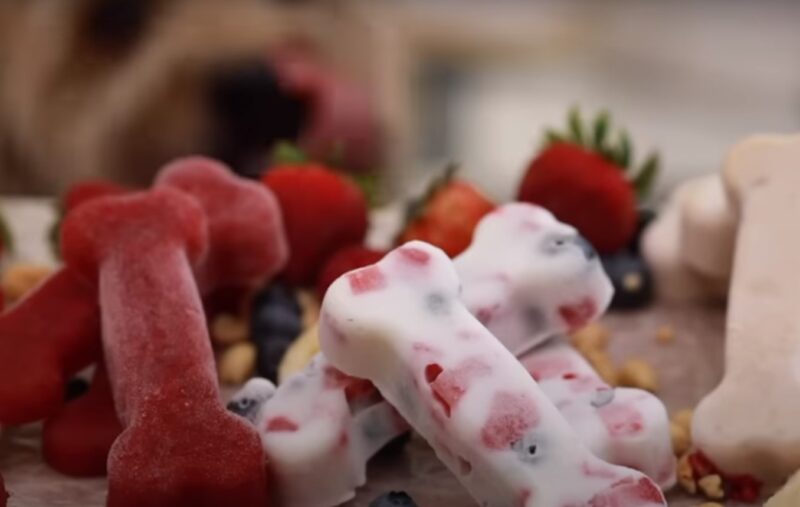
Certain fruits can be a sweet treat for dogs with pancreatitis. Apples (without seeds), blueberries, and melon pieces offer hydration, vitamins, and fiber. Always introduce fruits in small quantities and observe how your dog responds, as some dogs may have sensitivities or allergies to specific fruits.
Apple and Blueberry Medley Recipe
- Core an apple and cut it into small, bite-sized pieces (ensure all seeds are removed).
- Wash a handful of blueberries.
- Mix the apple pieces and blueberries together.
- Serve this fruity medley in small portions.
7. Rice and Pasta
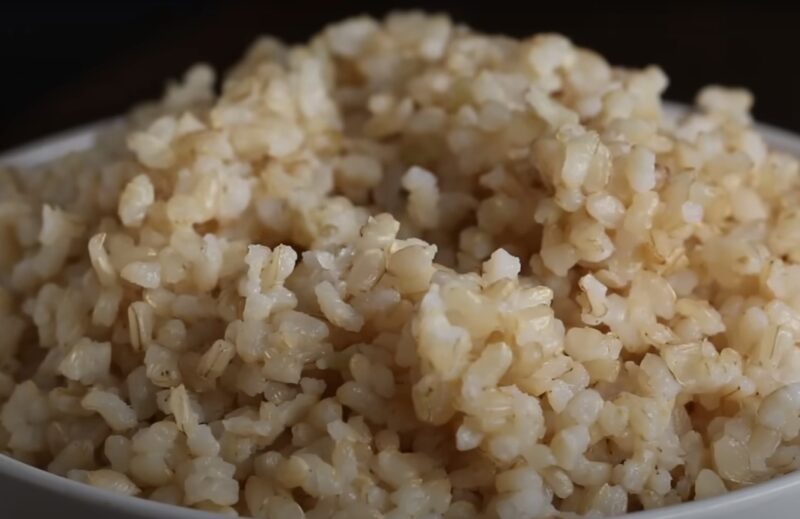
Cooked white rice or pasta can be a simple, comforting treat. They are low in fat and can be easily digested, making them a good option for dogs with sensitive stomachs. Ensure any pasta is plain and free from sauces or seasonings that could contain fats or irritants.
Simple Cooked Rice Recipe
- Cook white rice according to package instructions, but do not add any salt or seasonings.
- Let the rice cool down to room temperature.
- Serve a small portion as a treat.
6. Oatmeal Cookies
Homemade oatmeal cookies, with no added sugar or fat, can be a warm treat, especially on cooler days. Oats are high in fiber and help in digestion, but they should be given in moderation due to their higher carbohydrate content.
Simple Oatmeal Biscuit Recipe
- Preheat your oven to 350°F (175°C).
- Mix 2 cups of rolled oats with 1 cup of water.
- Form small, flat cookie shapes on a baking sheet lined with parchment paper.
- Bake for 15-20 minutes or until they start to turn golden.
- Let them cool before offering to your dog.
5. Fish Fancies
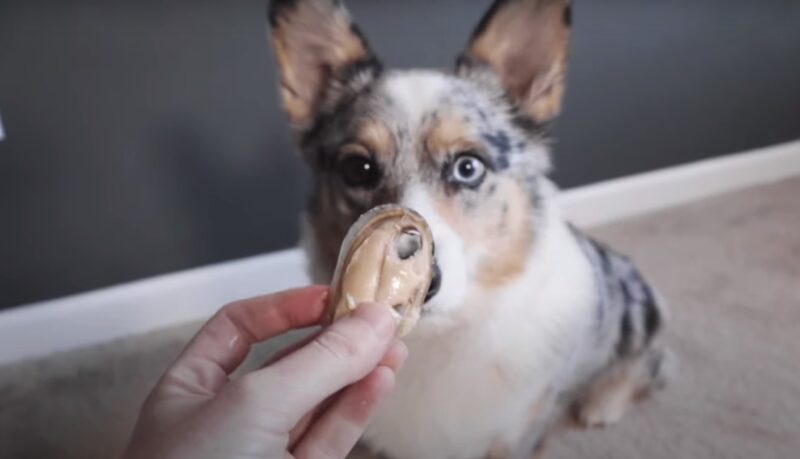
Certain fish like cod, haddock, or cooked salmon are low in fat and high in omega-3 fatty acids, which can help reduce inflammation. Ensure that the fish is cooked plainly, without any oils or seasonings, and all bones are removed to prevent any choking hazard.
Baked Cod Treats Recipe
- Preheat the oven to 375°F (190°C).
- Place cod fillets on a baking sheet lined with parchment paper.
- Bake in the oven for about 10-15 minutes or until the fish flakes easily.
- Let it cool and break into small, bite-sized pieces for your dog.
4. Sweet Potato Chews
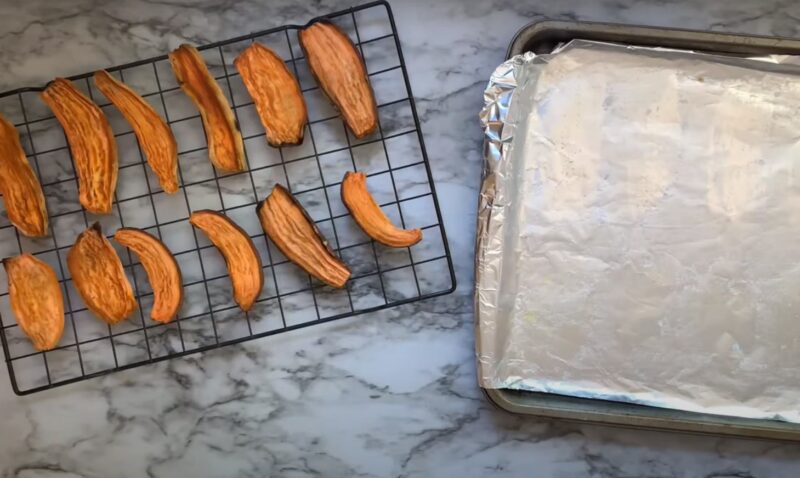
Sweet potatoes are a fantastic source of dietary fiber and contain a low fat content. Sliced and dehydrated sweet potato chews are a chewy treat that most dogs enjoy. These should be given in moderation due to their higher sugar content compared to other vegetables.
Dehydrated Sweet Potato Chews Recipe
- Preheat your oven to 250°F (120°C).
- Wash and slice sweet potatoes into thin slices.
- Place them on a baking sheet lined with parchment paper.
- Bake for 2-3 hours, flipping halfway through until they are dry and slightly crisp.
- Let them cool before serving.
3. Cottage Cheese or Yogurt
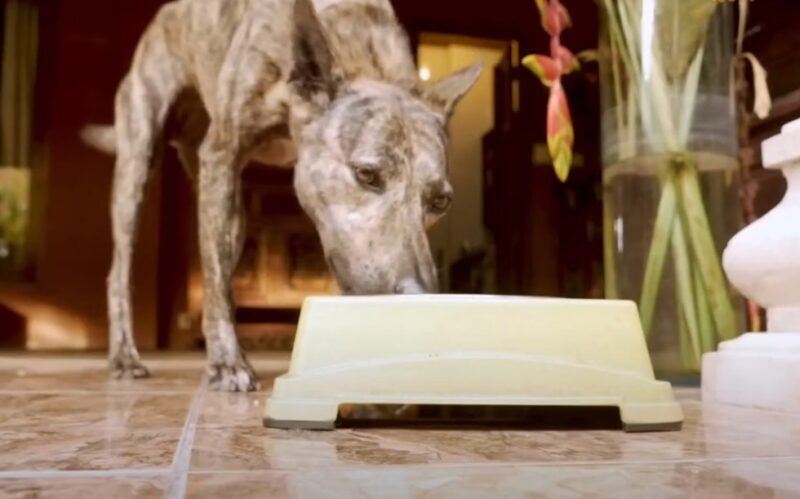
Low-fat cottage cheese or plain yogurt can be an occasional treat for dogs with pancreatitis. They provide calcium and proteins and can be soothing for the stomach. Always choose low-fat or fat-free options and introduce them slowly to ensure they don’t cause any digestive upset.
Cottage Cheese Mini Bowl Recipe
- Choose a low-fat or fat-free cottage cheese.
- Serve a small amount (1-2 tablespoons, depending on the dog’s size) as a treat.
2. Egg-cellent Treat
Eggs can be a nutritious treat when cooked plain and given in small quantities. They are a good protein source but should be fully cooked to avoid the risk of salmonella and to make them easier to digest. Avoid any added oils, butter, or seasonings.
Scrambled Egg Recipe
- Crack an egg into a bowl and whisk it.
- Pour the mixture into a non-stick pan and cook over low heat until it’s fully cooked and scrambled.
- Let it cool and serve in small portions.
1. Air-Popped Popcorn
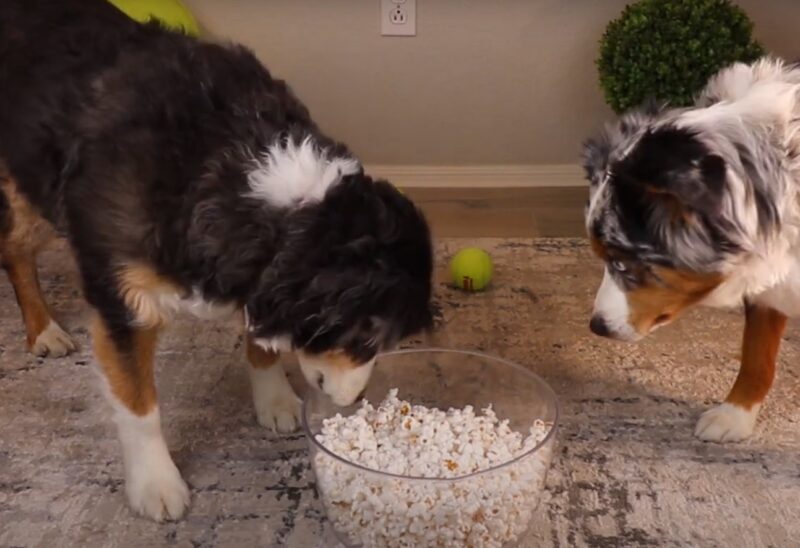
Plain, air-popped popcorn without butter or salt can be a light and fun treat for dogs. It’s low in fat and calories, making it a suitable occasional treat for dogs with pancreatitis. Ensure that the popcorn is fully popped as un-popped kernels can be a choking hazard and difficult to digest.
Plain Air-Popped Popcorn Recipe
- Use an air-popper to pop the kernels without any oil or butter.
- Ensure all popcorn is fully popped.
- Serve a small portion as a treat, ensuring no un-popped kernels or salt are included.
FAQs
What breeds are more susceptible to pancreatitis?
While any dog can develop pancreatitis, some breeds are more prone to it. Miniature Schnauzers, Cocker Spaniels, and Yorkshire Terriers are among the breeds that have a higher predisposition to this condition. Factors like genetics and breed-specific dietary habits might contribute to this increased risk.
Can a dog recover from pancreatitis?
Yes, many dogs can recover from pancreatitis with proper veterinary care and a strict diet. The recovery time and prognosis vary depending on the severity of the condition and how quickly treatment begins. Chronic cases might require ongoing management, but many dogs go on to live happy, normal lives post-recovery.
Are there any long-term effects of pancreatitis in dogs?
In some cases, dogs can suffer from long-term effects of pancreatitis, especially if the condition becomes chronic or recurs. These effects might include diabetes mellitus if the insulin-producing cells of the pancreas are damaged or exocrine pancreatic insufficiency where the pancreas can’t produce enough digestive enzymes.
Can diet alone manage my dog’s pancreatitis?
Diet plays a crucial role in managing pancreatitis and can sometimes be the primary way to manage the condition, especially in mild cases. However, severe cases might require additional treatments like fluid therapy, pain management, and monitoring for complications. Always follow a diet plan approved by your veterinarian.
How often should I feed my dog if they have pancreatitis?
Dogs with pancreatitis often benefit from smaller, more frequent meals to avoid overworking the pancreas. Typically, 3-4 smaller meals spread throughout the day are recommended. However, the exact feeding schedule should be determined based on your dog’s specific condition and needs, in consultation with your veterinarian.
Is pancreatitis in dogs contagious to other pets?
No, pancreatitis is not contagious and cannot be transmitted from one dog to another or to other pets. It is a condition that arises due to internal factors like dietary indiscretion, obesity, or other health issues, rather than an infectious agent.
Key Takeaways
Dealing with pancreatitis in dogs requires careful dietary management. While it might seem challenging at first, there are various safe and enjoyable treat options available. It’s crucial to remember that any dietary changes or treat introductions should be discussed with your veterinarian, particularly when managing a health condition like pancreatitis.
With the right balance and careful selection, you can continue to show love and care for your dog through the treats you provide, ensuring they are not only safe but also contribute positively to their health and wellbeing. As you incorporate these treats into your dog’s diet, always observe their reaction and make adjustments as necessary. With careful attention and care, your dog can continue to enjoy a happy and flavorful life even with dietary restrictions.
Related Posts:
- Boy Hamster Names For Your Little Friend! -…
- 5 Easy Ways to Treat a Sebaceous Cyst on a Dog (2023)
- Girl Hamster Names For Your Little Pet! - Funny &…
- Can Hamsters Eat Watermelon? A Sweet Combination or…
- Can Dogs Eat Blueberries? A Tasty Treat or a No-No?
- Can Hamsters Eat Mangoes? - Sweet Treat for Your Pet

